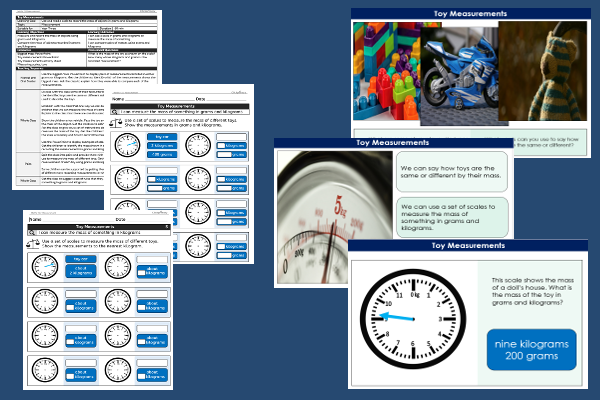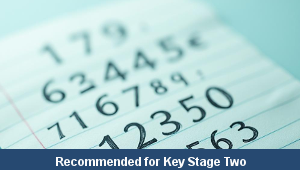Lesson Three – Toy Measurements

This maths teaching pack for Key Stage Two gets the children to identify and model how to use and read a scale to find the mass of different toys and games using measurements recorded in grams and kilograms.
The class can estimate and compare the mass of objects that they have measured in grams and kilograms on a set of scales correctly using symbols and the correct vocabulary words.
Download this teaching pack including a lesson plan, classroom activities and an interactive presentation to identify and model how to use and read a scale to find the mass of different toys and games using measurements recorded in grams and kilograms
Activities in this teaching pack include a set of differentiated worksheets to practise working with and reading a scale to record the mass of different objects for measurements in grams and kilograms which can then be compared using symbols and vocabulary words.
The interactive presentation gets the children to explore how to use and read a scale to record the mass of different toys and games in grams and kilograms.
This lesson is part of a maths scheme of work to get the children to solve problems by measuring, estimating, comparing and calculating the mass of different objects using standard measurement units. There are teaching activities for shared learning, differentiated worksheets to support independent learning and interactive presentations to introduce concepts and key skills.
-

Maths Arithmetic Assessment
Assess abilities in solving arithmetic number problems for addition, subtraction, multiplication and division when working with informal and formal written calculations
-

Environment
Identify and describe some of the special landscapes and locations that can be found in the world and reflect on how they can be protected and preserved for the future
-

Silent Letter Words
Explore and illustrate the meanings and spellings of some different words with silent letters when using them in a range of topics and scenarios
-

Complaint Letters
Explain and model how to format and structure writing when composing letters of complaint about different issues and scenarios
